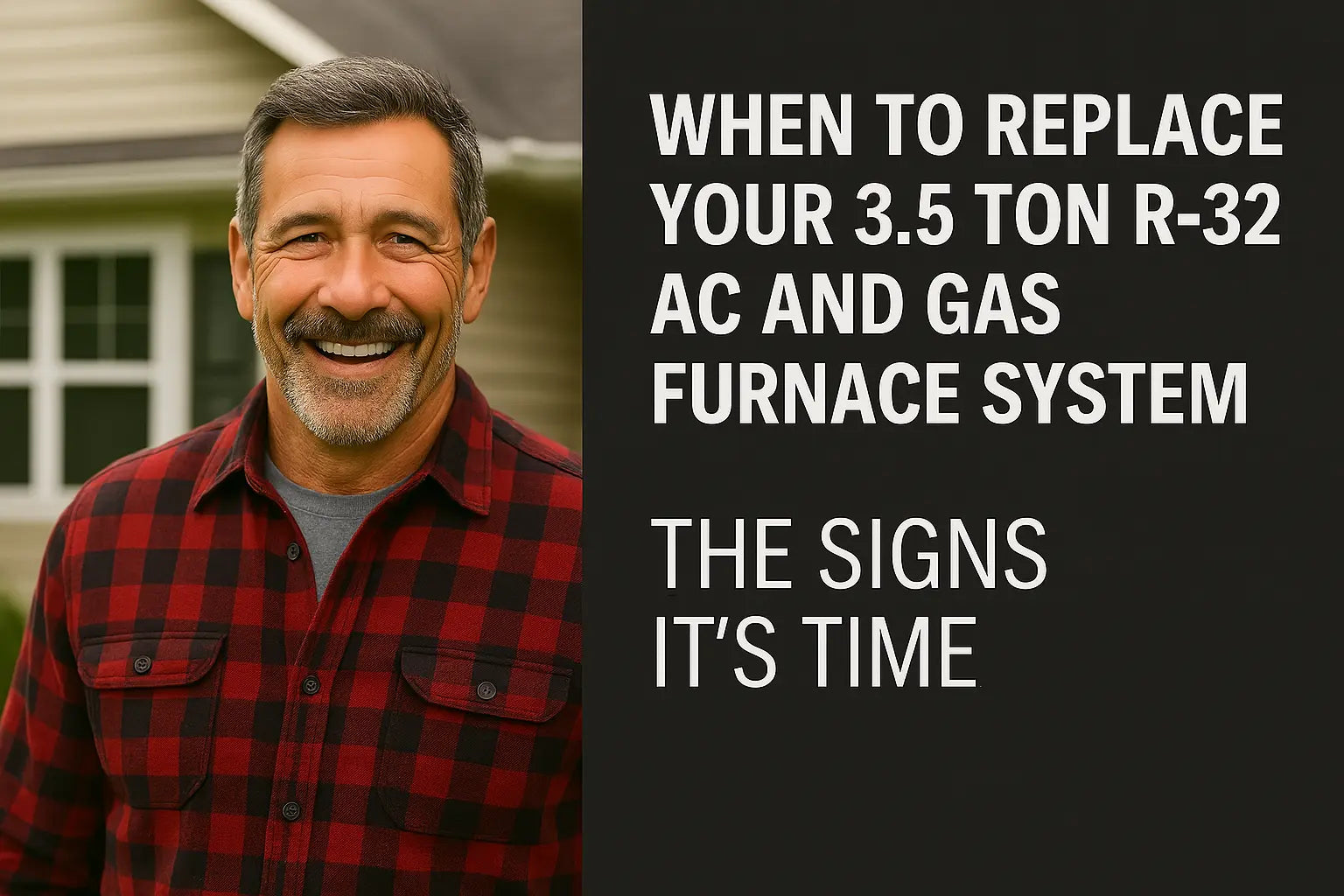Know When to Say Goodbye 👋
Hey there, it’s Mike Sanders again. Now listen, I’m all for fixing things when they break—and I’ve probably patched up more furnaces than I’ve had hot dinners. But sometimes, it’s just time to let go.
Your HVAC system works hard. It deals with freezing winters, muggy summers, dusty filters, curious pets, and all kinds of DIY experiments. And if you’ve got a 3.5 Ton R-32 AC and gas furnace combo like the ones over at The Furnace Outlet, you’re probably in good shape. But even the best equipment doesn’t last forever.
So how do you know when your system is just tired—or flat-out done? Let’s walk through it.
1. It’s Getting Up There in Years
The average lifespan of a gas furnace is around 15–20 years, and central air conditioners typically last 12–15 years with good care. If your system is older than that and giving you problems, it might be time to replace it instead of continuing with repairs.
Even if it still “works,” older units:
-
Are far less efficient
-
Lack safety and comfort features
-
May no longer be compatible with R-32 refrigerant upgrades
Need help checking your system’s age? Energy.gov has a solid overview of how long typical HVAC components last.
2. You’re Paying Too Much for Comfort 💸
High utility bills, even after a tune-up? Your HVAC system might be losing its edge.
-
Is your AC running longer to cool the house?
-
Do you feel like the furnace just can’t keep up anymore?
-
Are your summer and winter bills climbing year over year?
Modern systems with R-32 refrigerant and 96%+ AFUE furnaces can drastically improve energy efficiency. Check out this Forbes breakdown on HVAC system replacement cost vs. energy savings if you’re not sure where you stand.
A properly matched R-32 system like the ones at The Furnace Outlet will help you spend less to stay comfortable.
3. Frequent Repairs or Breakdowns
If you’re calling the HVAC guy every other season, that’s a sign.
Let’s say you spent $800 this year on a blower motor, $500 last year on a coil issue, and you’re now facing another $1,000 quote. That’s money that could be going toward a new system with a full warranty.
A good rule of thumb? Consumer Reports recommends replacing if the repair cost is more than 50% of the value of a new system—and especially if the unit is more than 10–12 years old.
4. Uneven Temperatures or Poor Airflow
Your system’s job is to keep the whole house comfortable—not just the room near the thermostat.
If you’re noticing:
-
Hot or cold spots throughout the house
-
Weak airflow from some vents
-
Trouble reaching the thermostat set point
...it could be a sign your equipment is undersized, failing, or not balanced properly anymore.
Before blaming ductwork or insulation, check your system’s specs. Many folks upgrade to a properly matched 3.5 Ton R-32 system to eliminate those frustrating temperature swings.
5. Strange Smells, Noises, or Leaks
Weird smells and noises are never good signs. Here’s what to watch for:
-
Burning smells when the furnace runs could mean dust or an electrical issue.
-
Rotten egg smell? Shut everything down and get out—possible gas leak.
-
Hissing or bubbling around the outdoor unit? Could be a refrigerant leak.
-
Banging or popping might mean a cracked heat exchanger.
If these sounds or smells show up more than once, you’re not just dealing with nuisance—it could be a safety hazard. That’s when it’s time to talk replacement instead of repair.
For more on what’s normal vs. dangerous, HVAC.com has a handy guide to HVAC noises and what they mean.
6. Your System Doesn’t Use R-32 (and You Want to Future-Proof)
Here’s the kicker—R-32 refrigerant is the new standard. It’s more efficient, has a lower global warming potential, and is quickly replacing R-410A across the HVAC industry.
If your current AC system doesn’t use R-32, you may find:
-
Replacement parts are harder to get
-
Refrigerant costs are rising
-
You’re missing out on better energy ratings
Upgrading to an R-32 system like these 3.5 Ton bundles is a smart move if you want performance, compliance, and a smaller environmental footprint.
Check out Daikin’s official R-32 resource page for a deeper dive into why the industry is going all-in on this refrigerant.
Mike’s Final Thoughts
Listen, I’m not telling you to throw away a system that’s still doing the job. But if your furnace is rattling like a pickup with no muffler and your AC is running harder than a swamp cooler in July, it might be time to call it.
Replacing your old system isn’t just about comfort—it’s about safety, energy savings, and peace of mind. And with the 3.5 Ton R-32 AC and gas furnace systems available now, you can upgrade to something that’s built for the future and built to last.
Want to make sure you 3.5-ton R-32 systems are installed correctly? Visit my guide: Hiring the Right Pro.
If your system’s sending you signals, don’t ignore them. You’ll thank yourself later—especially the next time the mercury hits triple digits or drops into single ones.
Stay smart, stay warm (or cool), and take care of that home of yours. 🔧👊🔥❄️
- Mike, your cool HVAC neighbor







